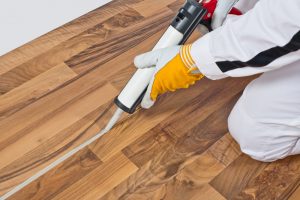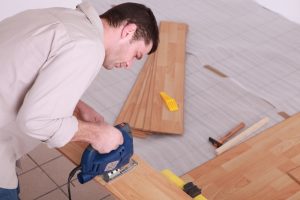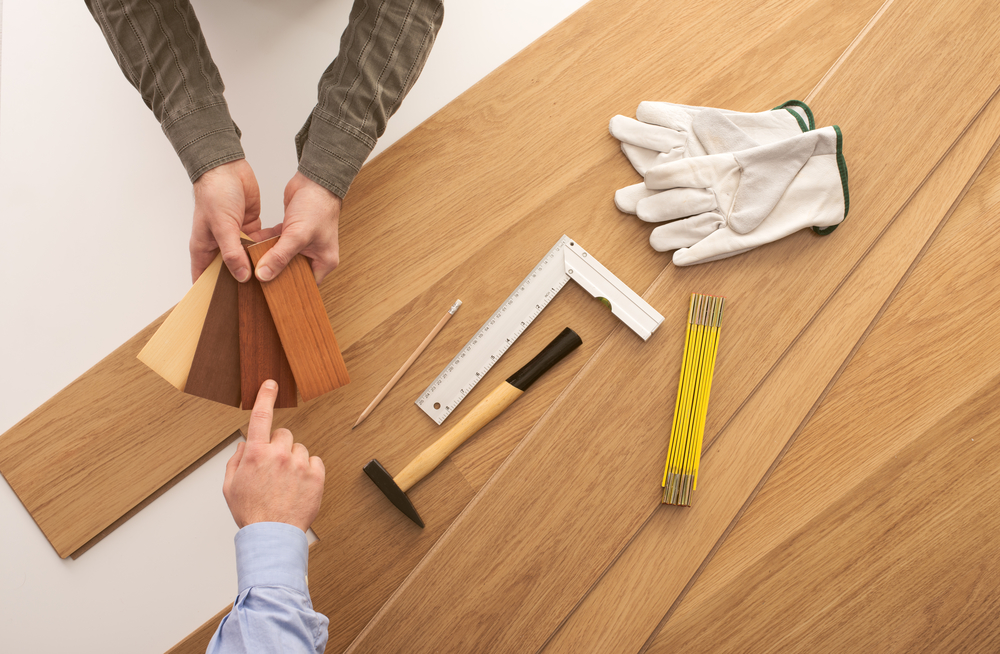If you are considering taking on a flooring renovation project or new flooring installation, one important choice you have to make is choosing between unfinished or prefinished hardwood flooring.
There are many different options available. You can choose a wood type, finish, and installation method based on your needs and preferences.
Picking the best option for you can be challenging. It’s always best to consult with your trusted flooring specialists. This way, you’ll know which type of flooring will work best for you: unfinished or prefinished.
In today’s post, let’s take a look at the pros and cons of prefinished hardwood flooring.
Advantages of Prefinished Hardwood Flooring
Installation
When it comes to prefinished hardwood flooring installation, the process is usually quicker and much more straightforward. Compared to sanding and finishing the floors on site, installers can do the job much faster with prefinished floors.
Sanding is a very time-consuming task. It can also get messy; during sanding, wood particles and dust tend to be cover the entire room including furniture and electrical appliances. Thus, proper precaution must be made. This usually involves clearing the whole room, covering up the furniture, and making sure nothing is in the way. Wood dust needs to be very cautiously and carefully cleaned.
Additionally, hardwood flooring that needs to be finished on site usually takes several hours up to a couple of days to dry out between each coat.
Durability

With prefinished wood floors, industrial chemical sealers are applied using tried-and-tested methods and processes.
This can attest to the strength of prefinished wood floors. These powerful industrial processes are not available to on-site flooring installers. Usually, prefinished wood has aluminum oxide crystals and a UV urethane coat.
On-site applied wood finish have a warranty of up to five to six years. On the other hand, prefinished hardwood flooring are warranted for up to 20 to 25 years.
Maintenance
The ease of maintenance is one of the most attractive trait of prefinished hardwood flooring. Because of the factory-applied finish of this type of flooring, there’s little to no maintenance required.
Prefinished wood is also resistant to discoloration, stains, and moisture – making it the ideal choice for homeowners with pets or little children.
When it comes to refinishing, prefinished wood flooring doesn’t need that type of maintenance as often as unfinished wood does.
Disadvantages of Prefinished Wood
Bevelling
Prefinished hardwood floors usually come with a slight beveled or rounded edge. Bevelling is not a drawback for some. However, it’s a style choice for many that don’t match with their own. The beveled look can appear excellent for some homes. However, it may not always agree with the aesthetic vision you want for your home.
Before taking on a flooring project, look at the prefinished wood options you have available. Ask your flooring specialist for sample swatches. These swatches can help you decide if the beveled look is something you can work into your stylistic preferences.
Seams
Because prefinished hardwood flooring has been processed ahead of the actual installation, there’s no sealing agent applied in between the planks. Dirt and dust may accumulate over time in the seams.
Because of the absence of a sealing agent, the seams may also be open to water. When there’s water and moisture present, mold tends to develop underneath the floors. This can cause significant damage over time.
 They have the tools and know-how needed when it comes to installing prefinished hardwood flooring.
They have the tools and know-how needed when it comes to installing prefinished hardwood flooring.
Repairs
The chemical sealant in prefinished hardwood flooring means you won’t easily spot any need for repairs. If you do need it, you’ll have to refinish the entire floor, or you may need to replace that section entirely.
Refinishing
It’s true what we mentioned above: prefinished wood doesn’t require a lot of refinishing. However, the time it needs one, the process is usually more challenging. Over time, the original finish applied in the factory will begin to fade.
The thick chemical sealant used in the prefinishing process seeps into the wood; removing it to refinish the floors is a big project. Your refinishing specialist will need to sand the wood thoroughly. In this process, a lot of wood will be lost, making your floors thinner. And as the floors get thin, the number of times you’re allowed to refinish it will also decrease.
